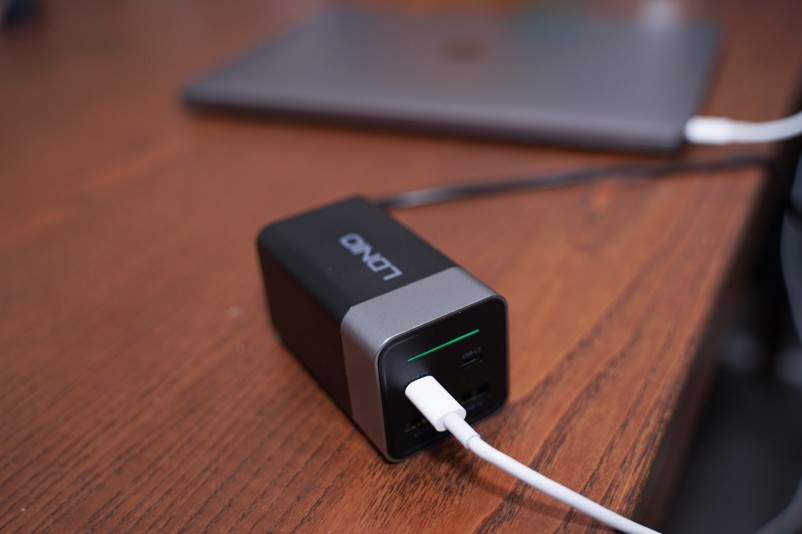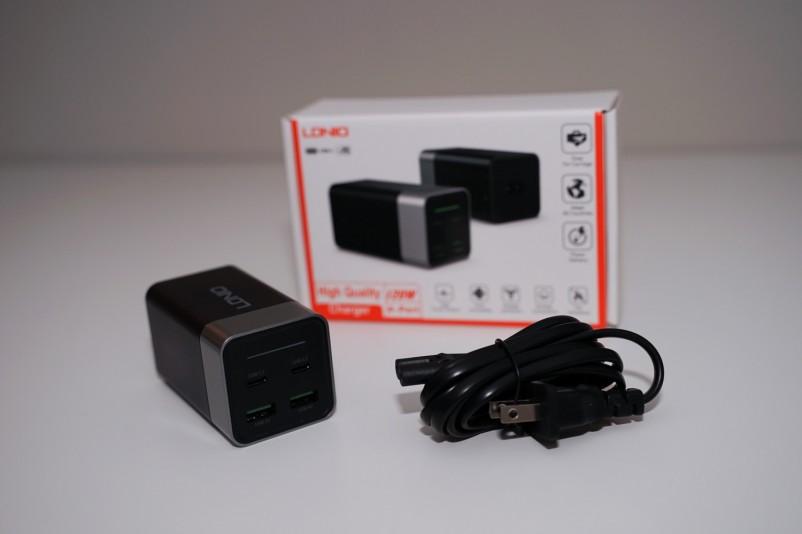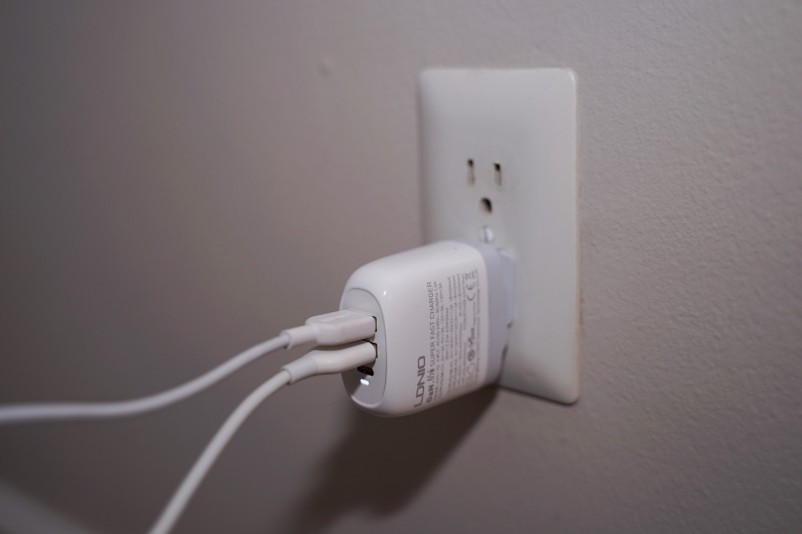



Keeping your devices charged has never been more complicated. Do you want to go USB-A or USB-C? Stock accessories or aftermarket? Gallium nitrate (GaN) or silicon? Even USB-C comes with Power Delivery (PD) and non-PD variants. You could simply purchase one device with the maximum power that does it all. But then you would need to spend extra money and carry around more bulk than you would need to otherwise. So it does take a little bit of work to figure out which charging block will suit your needs. But once you have things dialed in, you will be ready to get back to living your life, with your devices charging at optimal levels.
Today we are looking at two chargers from LDNIO. The first is a 120W 4-port charger, and the second is a 65W compact wall charger. These are two different products for two different use cases. Read below to see which one is suitable for you.
LDNIO 120W 4-port charger with 2x USB-C and 2x USB-A
Both of these charges use gallium nitrate, which supports higher voltages, longer durability, and smaller sizes compared to older silicon-based chargers.
The first of these chargers is a beefy one that will handle most uses cases. The power cable attaches to the charging block via a 2-prong connection. The front of the block provides 2x USB-C and 2x USB-A ports. In single port charging configuration, the USB-C port can output 100W, which the USB-A port can output 18W. The USB-C also supports Power Delivery for faster device charging.
You need to know the max power that is supported by your devices and your charging cables in order to determine if this charger is the best for you. Just to put some numbers out there, an Apple Air may draw around 65W power max. iPhones and iPads draw from 18-30W, depending on the model. A higher end laptop, such as a Dell XPS 15, may draw 130W. Also keep in mind the maximum power that a charging cable will support. The stock USB-A to Lighting Apple cable supports around 10W, while a USB-C to lightning can go as high as 30W.
So an optimal configuration may be something like an Apple Air (65W), iPad via USB-C (30W) and an iPhone via USB-A (18W), which is within the capacity of this charger. Another example may be 2x Apple Air each drawing 60W. You can mix and match ports, as long as you aware of the max output of this charger. However, at 120W, this is one of the most powerful chargers on the market, and it should handle most of your charging requirements.
When testing this product with a Dell XPS 15, which comes with a 130W adapter, I did see a warning message in Windows stating that in order to get the maximum performance I should use the stock adapter. The Dell laptop would charge, but since the LDNIO charger is slightly less powerful than the stock adapter, the battery may drain slowly when running the laptop at max performance.
When it comes to the construction and build of this product however, it is excellent. It has a hefty weight and would sit very aesthetically on any workstation. Devices can be plugged and unplugged from it, and it would act as the central charging point on your table. Especially considering the best-in-class power capacity, it really is an excellent device.
Click Here to purchase LDNIO 4-port 120W GaN USB-C and USB-A Charger on Amazon
LDNIO 65W 3-port charger with 2x USB-A and 1x USB-C
The next charger we are looking at today is one that really demonstrates the compactness and power of the gallium nitrate components. This charging block plugs directly into the wall and is approximately the same size as the iPad stock charging block. However, the iPad block only provides 10-20W of power, depending on model, and a single USB port. This charger has 3 ports and 65W, which means it has 3x the power and charging capacity as an iPad charging block, in the same sized package.
Although this charger is diminutive in stature, it has enough power to charge an Apple Air singlehandedly. You could also use it to charge 3x mobile and tablet devices simultaneously. It could be possible to charge a laptop and a mobile device at the same time, but just keep in mind the laptop would be charging at less than full power.
In single-port configuration, the USB-C port can output 65W with PD, or the USB-A port can output 18W. In dual or triple port configuration, the USB-C would output 45W and the two USB-A ports can output 20W combined.
The overall construction of this device is study. However, one potential gripe is the replaceable plug in the back of the charger. It could be handy if you are traveling to different countries and you carry a variety of backplates with you. But if you are staying within the United States, you may regret that the prongs are not more seamlessly integrated into the charger. It does have the potential to detach if the latch is depressed accidentally, so that is something to consider.
But overall, for the size, this is around the maximum power and number of ports that is possible to have. If you are looking for something that packs a punch in a compact size, to charge lower-power laptops and mobile devices, this charger might fit the bill. Note that the package also comes with USB-C to USB-C cable.
Click Here to purchase LDNIO 3-port 65W GaN USB-A and USB-C Charger on Amazon

 Share on Facebook
Share on Facebook





















